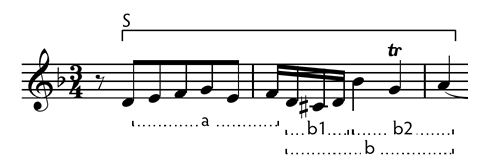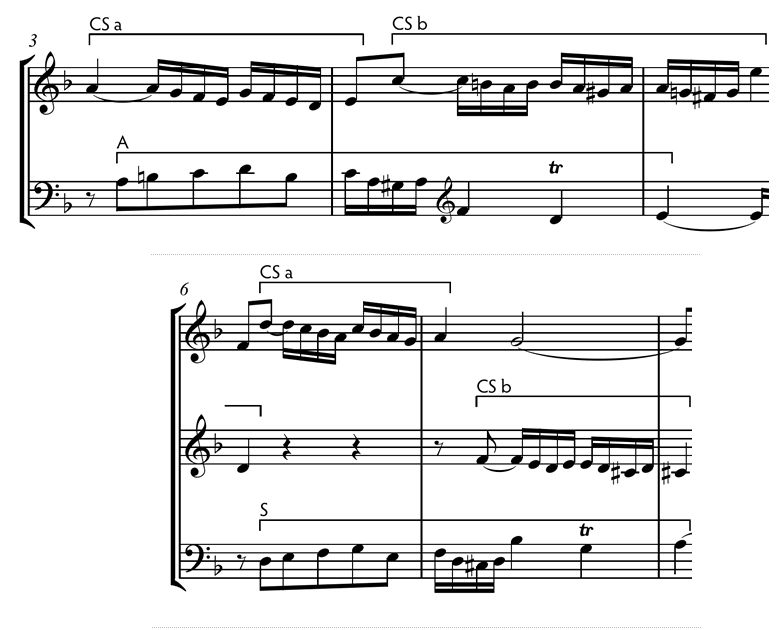Analysis of Bach's fugue BWV 851 in D Minor (WTC I)
José Rodríguez Alvira
The BWV 851 fugue in D minor is an excellent example of effective use of contrapuntal techniques like transformation by inversion or contrary motion, invertible counterpoint and stretti.
Exposition
The fugue is a three voice fugue. Motives from the subject will be used throughout the fugue:

We will use the letters a and b to identify the motives. Motive b will often be subdivided, so we will identify each part as b1 and b2:

Going back to the first example we find that motive a transformed by inversion and diminution is used to create the first part of the counterpoint to the real answer (A). Motive b1 makes the second part and motive b2 appears after the answer concludes:

This counterpoint can be considered a countersubject although it will be used with some liberty throughout the fugue. When the third voice plays the subject the countersubject is divided between the soprano and the alto. We will identify the first part as CS-a and the second part as CS-b:

The exposition ends in measure 8 with the bass:
© 2011 José Rodríguez Alvira. Published by teoria.com